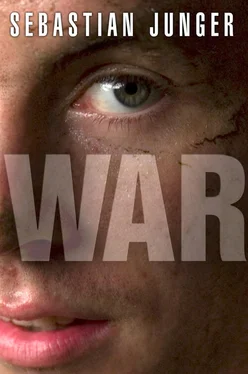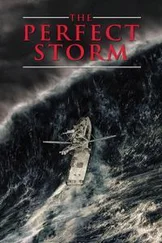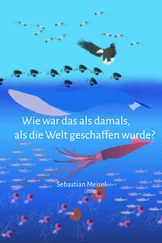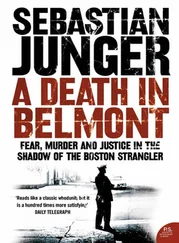The signal to attack was two long bursts from a heavy machine gun. That was immediately followed by waves of rocket-propelled grenades that took out or suppressed every heavy weapon at the base. There was so much fire coming in that the mortar tubes were sparkling with bullet strikes and no one could get near them. A grenade hit the missile truck almost immediately and set it on fire. The Americans were instantly outnumbered and outgunned and shooting so much that the barrels of their guns were melting. A sergeant named Hector Chaves, who had already been through Ranch House, saw a Taliban fighter climbing a tree outside the wire so he shot him. Another fighter started climbing the tree so Chavez shot him too. After Chavez shot his third man they finally abandoned the tree and tried something else.
An RPG hit near the mortar pit and tore up a mortarman named Sergio Abad with shrapnel. Abad had transferred out of Battle Company several months earlier, and the last time I’d seen him, he was relaxing at Camp Blessing, just waiting to go home. Now Abad found himself lying wounded in the mortar pit handing ammo to Chavez, who was busy firing over the tops of the sandbags. The 120 mm mortars, which have a killing radius of seventy yards, caught fire, and Chavez and another man grabbed Abad and started pulling him to safety. Halfway across the base they took a burst of machine-gun fire and Chavez went down, shot in both legs. He continued crawling toward cover, pulling Abad behind him, until several men at the command post ran out and rescued them.
Abad died quickly in the command post lying next to Chavez and several other wounded. Chavez was worried he’d been hit in the balls and so in the middle of the firefight he made Staff Sergeant Erich Phillips pull his pants down and make sure everything was okay. It was. The blazing missile truck finally exploded, engulfing an Afghan soldier in flames and sending antitank missiles tumbling across the base. One landed in the command post, and as it sat there the men could hear the motor spinning up and the weapon arming itself. Chavez just lay there, waiting. “I was in so much pain I couldn’t move,” he told me. “I just said ‘Fuck it, I’m done.’ Then Sergeant Phillips came over, picked the motherfucker up, walked it out somewhere, and tossed it.”
Meanwhile, a hundred yards outside the wire, the outpost was getting overrun. The first barrage of grenades had slammed into the position and wounded or incapacitated every man there. The grenades kept coming and blowing men out of their positions and the weapons out of their hands and even the helmets off their heads. A specialist named Matthew Phillips stood up to throw a hand grenade and was killed before he could pull the pin. Specialist Jason Bogar was ignoring the rounds that were sparking off the boulder in front of him and going cyclic on his SAW. It finally jammed when the barrel turned white-hot and started to melt.
Enemy fighters were swarming toward the position, and the only way to keep them back was to keep up a constant barrage of fire. The weapons couldn’t sustain it, though. If a machine gun could shoot forever, one man could hold off a whole battalion, but they jam. That’s how positions get overrun. After Bogar’s SAW went down the 240 ran out of ammo and the men were reduced to shooting with their rifles and throwing grenades. Almost every man was wounded by this point, some badly. There was so much gunfire that, psychologically, it was very hard for the men to expose their heads above the tops of the sandbags in order to shoot. Specialists Chris McKaig and Jonathan Ayers decided to pop up in unison, shoot a burst, and then duck down again. They did that several times until Ayers was hit in the face and fell over, dead.
Sergeant Ryan Pitts, the platoon forward observer, was pinned down and badly wounded in the northernmost position. He’d gotten a tourniquet onto his shattered leg and started throwing hand grenades over the top of the sandbags. Between explosions he got through to the command post by radio and told them that they were getting overrun. A three-man team led by First Lieutenant Jonathan Brostrom left the base and ran through heavy fire carrying weapons, ammunition, and medical supplies. One of them got hit almost immediately. Brostrom and Specialist Jason Hovater made it to the outpost and began fighting with the help of another specialist named Pruitt Rainey. They grabbed the 240 from Pitts — he was too badly wounded to use it — and moved to an adjacent fighting position. At one point a specialist named Stafford heard one of the men scream, “They’re inside the wire!” followed by a long burst of gunfire. Then, “He’s right behind the fucking sandbag!” and another burst. After that came silence, and Brostrom, Rainey, and Hovater were dead.
By this time there were almost no functioning weapons at the outpost. Three wounded men, unaware that Pitts was lying wounded in the northern position, crawled through the outpost making sure everyone was dead and then started staggering toward the relative safety of the base. They made it amid a hail of gunfire and Pitts, who by now had run out of ammo, realized he was alone up there. Enemy fighters were so close that when he radioed for help he had to whisper. Another relief team was organized and four men left the wire at a run and headed for the outpost. One of them was a private first class named Jacob Sones: “No one wanted to go up there because the way they were shooting, whatever angle they had, it was perfect,” Sones told me. “They were laying that place down, they were blowing the shit out of it. We got up there and they were all dead except for Pitts, but at the time you’re just like, ‘We have to get this done or everybody’s going to die.’”
As soon as they got there they took another tremendous barrage of grenades. One hit Sergeant Israel Garcia dead on. He died within seconds, Pitts holding his hand and telling him they were going to get him home. The blast “hot-miked” his radio and jammed the platoon frequency. Within minutes everyone on the relief team was dead or wounded. They fought on, picking up jammed weapons and trying to shoot them and throwing them down and looking for more. Sones remembers seeing Specialist Phillips and another man lying dead, embracing each other. Ayers was slumped over a 240, and they had to pull him off to use the gun, which was jammed anyway. The Taliban were even throwing rocks at them, hoping the Americans would think they were grenades and jump out of their positions, where they could be shot.
Sones made his way to Pitts, who was blacking out from blood loss, and together they started trying to crawl back to the main base. Right around then — about an hour into the fight — the first Apaches arrived. They hunted men in the treeline and did gun runs that plowed up the earth thirty yards outside the sandbags. The Apaches finally managed to tilt the battle back in favor of the defenders. Nine Americans were killed and twenty-seven wounded — over half the American force at the base. It was the single costliest firefight of the war. It was the single costliest firefight since Mogadishu. At some point the enemy supposedly managed to drag two dead Americans down several agricultural terraces before abandoning them. They hadn’t overrun an American base, but they’d penetrated a position and put their hands on American soldiers. It wasn’t a good sign.
Back at the KOP, Battle Company was following the events over the battalion net as they unfolded, and Third Platoon was mobilized to fly in by helicopter and reinforce the position. After Third Platoon left, Kearney gathered the rest of his men around the command center at the KOP and told them what had happened. He stood in a brown T-shirt, twenty-seven years old, all the youth in his face gone, unshaved and grim and angry.
Читать дальше
Конец ознакомительного отрывка
Купить книгу












